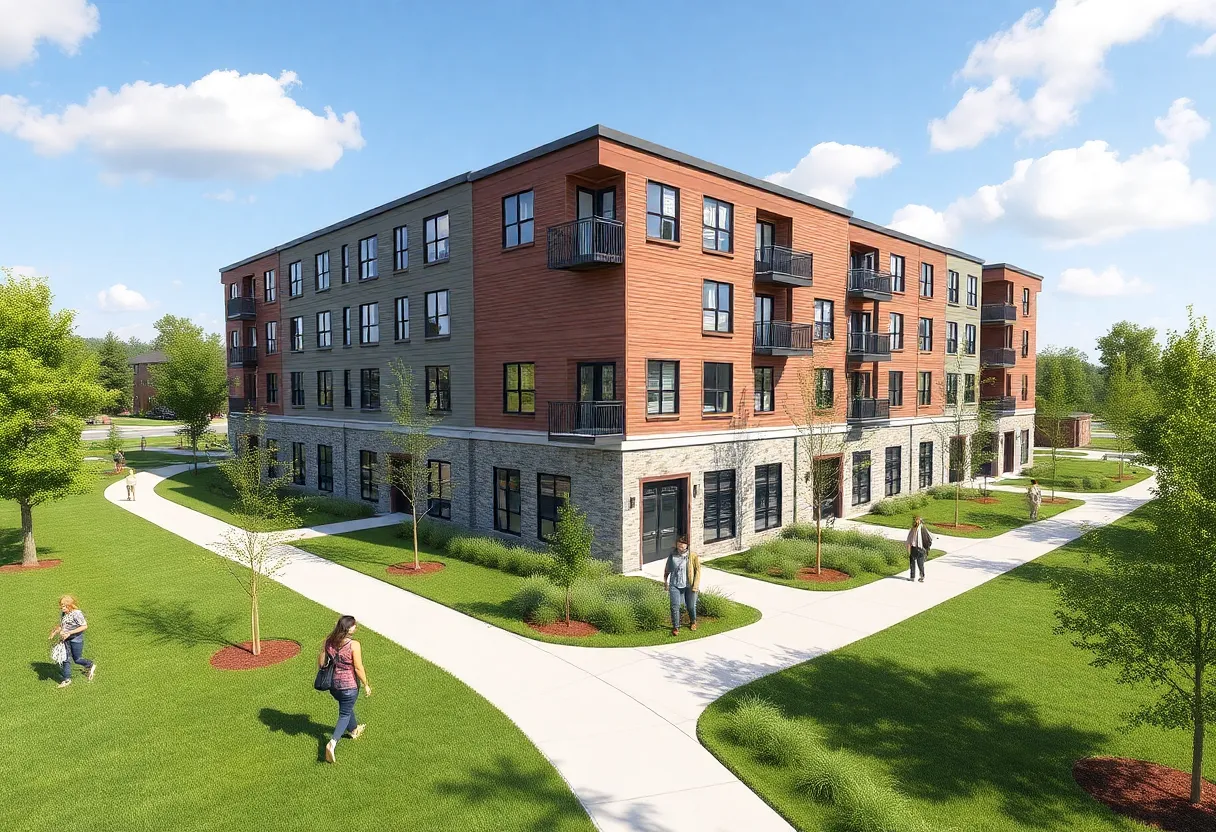Global, September 11, 2025
News Summary
A 250-page industry report finds the global construction SaaS market valued at USD 16.3 billion and forecast to reach USD 45.5 billion over the next decade, implying a roughly 10.8% CAGR. Growth is driven by strong adoption of project management platforms and public cloud deployments, with commercial construction the largest application. Key trends include AI-enabled analytics, BIM integration, mobile collaboration and IoT monitoring. Challenges include data security, cloud vulnerabilities, legacy integrations and slower uptake among smaller contractors. Country-level forecasts show the fastest expansion in rapidly urbanizing markets and steady gains across developed economies.
Global Construction SaaS Market Eyes Growth to USD 45.5B by 2035, With 10.8% CAGR
The global construction software-as-a-service (SaaS) market is forecast to surge over the next decade as cloud-based platforms reshape how projects are planned, managed, and delivered. The baseline for 2025 is pegged at USD 16.3 billion, with projections pointing to a rise to USD 45.5 billion by 2035. The overall growth rate across the decade is expected to average 10.8% per year, creating a sizeable expansion for providers, developers, and construction firms alike.
Market stakeholders describe construction SaaS as a specialized segment within the broader construction management software world. Adoption is accelerating as firms seek more scalability, centralized data access, and faster implementation timelines. Regulatory pushes for documentation transparency and risk mitigation are also encouraging digital adoption, as teams look to reduce manual effort and improve accountability across complex projects.
Key market snapshots
- Market size in 2025: USD 16.3B
- Projected size in 2035: USD 45.5B
- CAGR (2025–2035): 10.8%
- Project management software holds the largest slice, about 29.40% of the 2025 market
- Public cloud deployment is forecast to claim roughly 51.70% of the market in 2025
- Commercial construction leads with about 38.90% market share in 2025
The market is segmented by software type, deployment model, application, and end-user, reflecting a broad range of needs across the construction lifecycle. Project management; field service management; estimating and bidding; enterprise resource planning (ERP); construction management; and other software types are among the core categories. Deployment models include public cloud, private cloud, and hybrid cloud, with public cloud currently dominating the landscape. Applications span commercial, residential, and infrastructure projects, while end-users range from general contractors and subcontractors to engineers, architects, and builders/developers.
Regional dynamics show large differences in growth pace. The highest growth rates are seen in major emerging markets, with China showing a 4pin numbers like a 14.6% CAGR among leading nations listed, and India close behind at 13.5%. In Europe, France clocks in at about 11.3%, the United Kingdom around 10.3%, and the United States at 9.2%, reflecting a mix of modernization efforts, project backlog, and regulatory considerations across regions.
In practice, several market forces reinforce the trajectory. Leading project management capabilities are emphasized for end-to-end control over planning, scheduling, budgeting, and resource management, bolstered by real-time dashboards and automated reporting. The public cloud model is favored for its scalability, lower upfront costs, rapid deployment, and easier access to updates, backups, and analytics. Commercial construction’s prominence is tied to growing activity in offices, retail, and urban infrastructure in developing economies, along with higher project values and tighter compliance needs that demand robust tendering, subcontractor management, and client reporting tools.
Adoption is supported by ongoing advances in technology. AI-enabled analytics, mobile collaboration, predictive scheduling, risk assessment, automated reporting, and integrated dashboards are cited as key trends. At the same time, a set of challenges remains, including data security concerns, cloud infrastructure vulnerabilities, compliance with regional data protection regulations, and the complexity of integrating new platforms with legacy enterprise systems. Resistance to digital adoption among smaller contractors and gaps in workforce training also pose hurdles to widespread uptake.
Market players and regional leaders
In the landscape of providers, several names are frequently cited for their platform breadth and integration capabilities. Core offerings emphasize integrated project workflows, real-time insights, and easy compatibility with existing software stacks. Enterprise-grade solutions underline scalability and advanced analytics, while cloud-delivered design and BIM features highlight collaboration and reduced rework. Beyond the big three, other notable participants include firms known for ERP integration, CAD and BIM alignment, and field operations solutions. Market activity also targets smaller contractors with tools tailored to their size, alongside larger firms seeking robust data management for large-scale infrastructure. The overall message remains that SaaS for construction is becoming a standard, essential component for efficient, transparent, and digitally connected operations.
What this means for the next decade
Across the board, the sector is moving toward more automated workflows, better data governance, and tighter project control. The combination of cloud-based platforms, AI analytics, and IoT-enabled asset monitoring is expected to drive improvements in project delivery times, cost control, and safety management. Firms that leverage end-to-end visibility, scalable deployments, and strong integration with BIM and ERP systems are best positioned to capture the value offered by construction SaaS as the industry modernizes.
Key takeaways
- Market growth: Expect substantial expansion from 2025 to 2035, led by project management and cloud deployment.
- Leading deployment: Public cloud is the dominant deployment path, enabling rapid updates and global access.
- Leading application: Project management tools are central to coordinating complex commercial and infrastructure projects.
- Regional breadth: Growth is strongest in several large emerging markets, with developed markets upgrading legacy systems.
- Opportunities and risks: Integration with BIM, AI-based analytics, and IoT offer opportunities, while data security and regulatory compliance remain critical concerns.
Frequently asked questions
The following questions summarize the main findings of the market outlook and provide quick answers for readers seeking essential details.
Key features at a glance
| Feature | Details |
|---|---|
| Market size (2025) | USD 16.3 billion |
| Projected size (2035) | USD 45.5 billion |
| CAGR (2025–2035) | 10.8% |
| Leading software type | Project management (29.40% share in 2025) |
| Dominant deployment | Public cloud (51.70% share in 2025) |
| Top application segment | Commercial construction (38.90% share in 2025) |
| Key regions for growth | China, India, France, United Kingdom, United States (growth rates listed) |
| Leading end-users | General contractors, Subcontractors, Engineers and architects, Builders & developers |
| Major challenges | Data security, regulatory compliance, integration with legacy systems, adoption gaps |
Deeper Dive: News & Info About This Topic
Additional Resources
- Future Market Insights: Construction SaaS Market Report (Sep 10, 2025)
- Wikipedia: Construction software as a service
- PR Newswire: Wright Brothers selects PowerFleet Unity (AI video SaaS)
- Google Search: PowerFleet Unity AI video SaaS Wright Brothers
- MDM: The top eProcurement SaaS providers in building & construction
- Google Scholar: eProcurement SaaS building construction
- EU-Startups: €38M for Plancraft to lead AI transformation in European construction
- Encyclopedia Britannica: Plancraft AI construction
- SaaStr: 5 learnings from Procore at $1.2B in ARR
- Google News: Procore 1.2 billion ARR learnings





